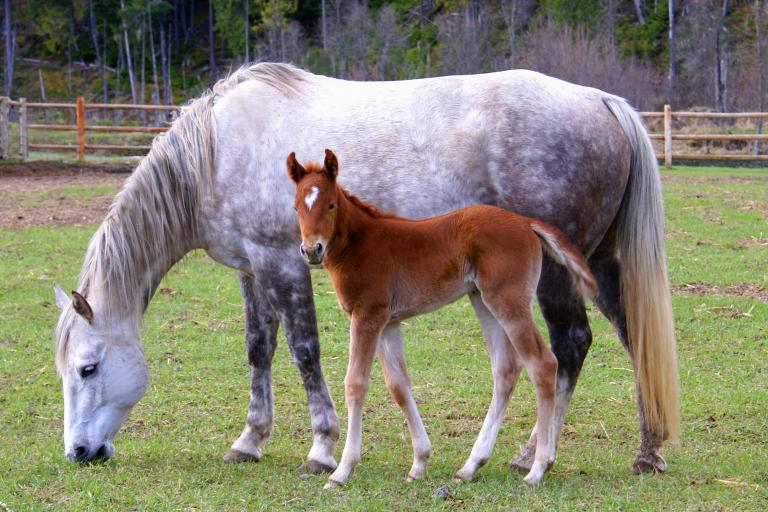Hoof Wall Separation Disease (HWSD Horse)
Hoof Wall Separation Disease (HWSD) is characterized by a defect in the connective tissue of the hoof wall. Affected animals have hooves that can be brittle and crack easily. An unstable hoof wall can lack structural integrity and ponies may be forced to walk on the soles, developing lameness. Some affected ponies are manageable with intensive hoofcare, but others must be euthanized for quality of life reasons.
The mutation was originally identified in Connemara ponies but has not also been found in Tinkers, Cobs, American Miniature Horses, and German Riding Ponies. It has an autosomal recessive mode of inheritance.
Genetic Test: available in Shop
Symptoms
- Unstabile, brittle hoofwall
- Lameness
- Inflammation of the hooves
- Hoof pain
General Information
- Hoof Wall Separation Disease (HWSD) is characterized by a defect in the connective tissue of the hoof wall
- The first symptoms are commonly noticed within the first year.
- As the hoofwall separates from the hoof, the horse can become lame.
- Although some affected horses have minimal symptoms, the worst cases can require euthanasia because of severe pain.
Breeds affected
Test Information
This mutation test identifies a single base pair insertion (c.504_505insC) in the SERPINB11 gene.
Test in Shop
Genotype and Lab Report
Inheritance: autosomal recessive
→ Only horses with two copies of the variant (hwsd/hwsd) are affected. Horses with only one copy (N/hwsd) are clinically healthy carriers.
Genotypes:
N/N = normal
The horse has no copies of the genetic variant causitive for HWSD and therefore cannot pass it on to its offspring.
N/hwsd = a carrier
The horse is clinically healthy. It has one copy of the genetic variant causitive for HWSD, which will be passed on to its offspring with a probability of 50%.
hwsd/hwsd = affected
The horse is affected and has two copies of the genetic variant causitive for HWSD. The variant will be passed on to its offspring with a probability of 100%. All offspring will be carriers.
Recommendations
- Carriers may be bred to normal animals (N/hwsd x N/N) without any risk of producing affected offspring. The offspring should also be tested before breeding to determine if they are carriers or normal.
- Breeding two carriers (N/hwsd x N/hwsd) is not recommended due to the possibility of 25% of the offspring being affected.
- Affected animals (hwsd/hwsd) may only be paired with non-carriers (N/N) following a critical review of the breeding value of the animal.
Breeder Information Germany: The FN ZVO requires that both Stallions and Mares must be tested (or be proven normal by parentage) to be entered into the mare and stallion studbooks. Carrier to carrier matings are forbidden, and foals from carrier x normal matings must have genetic testing. Results are published on the FN website.
Literature
Finno, C.J., Stevens, C., Young, A., Affolter, V., Joshi, N.A., Ramsay, S., Bannasch, D.L.: SERPINB11 Frameshift Variant Associated with Novel Hoof Specific Phenotype in Connemara Ponies. PLoS Genet 11:e1005122, 2015. Pubmed reference: 25875171. DOI: 10.1371/journal.pgen.1005122.
Further Information is available on Online Mendelian Inheritance in Animals.

